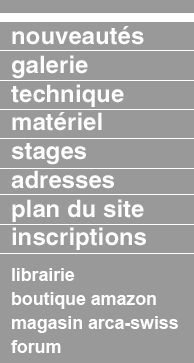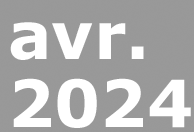|
|
|||||||||||||||||||||||||||

|
Area Parkan interview by Pierre Filliquet
In the current Korean photographic production your images stand out in a position rather critical than aesthetical.You have participated in several exhibitions which demonstrated the limits of documentary photography. What are your intentions when you expose in galleries and museums, series like "Arbeit", "the game" or "boys in the city"? The Game is a narrative about the division of the peninsula and Boys in the City is about teenage boys living in the city. The content in both subjects are deeply imbued in our lives. Moreover, while there are many examples of addressing this subject in the media through television programme or in the style of reportage, it is a subject that was rarely approached in the art world through photography. Accordingly, through an exhibition of the works in a space that is deemed rather authoritative and formal such as a museum, I sought to show and to allow for a reflection of our society through different meaning and a different point of view. Also, I anticipated a follow up of an alternative development through a shaping of a new discourse with critique and discussion. Conclusively, I cannot say that I achieved huge success but I believe my intentions have been expressed through several interviews with the interested media outlets. |
||||||||||||||||||||||||||
|
|
|||||||||||||||||||||||||||
le photographeArea Park
http://www.fotoful.net/gallery/
http://ny7train.egloos.com/1878333 1971 Born in Pusan, Korea Solo Exhibition
|
You have used a much less common format, more less for this kind of subject: 6x17 cm. Why did you choosed it, What are it's advantages and disadvantages? There is a usual tendency to assume that the 17x7 panorama camera should be used to take nature landscape photos but I attempted to go against that stereotype. Of course, it is also true that my work was noticed because I used a format that was unfamiliar to many. In most cases, documentary photos are taken on a 35mm or a medium format camera because it is instantaneous and easy to use speedily. However, the reason why I used a 6x17 panorama camera is because the environment or the situation that my subject is placed in is more important than the individual person. The environment that the individual is placed in and the situation that the individuals in the city are blindly thrown at were able to be depicted in these photos, and I believe the panorama format was especially effective in capturing that. I am sure that the advantages and the disadvantages of using a large format or panorama camera is shared by photographers working anywhere in the world. They are incredibly heavy and extremely cumbersome. However, one’s attitude becomes quite serious and sincere when standing behind the camera, confronting the situation that is placed in front of them and the lens, so it also feels natural than an artist would prefer a large format camera.
|
||||||||||||||||||||||||||
|
|
|||||||||||||||||||||||||||
Interview par
|
How could you define the specificities of the Korean society and culture on wich we have a so poor knowledge here. How does it appears,in your opinion, in the artitistic work of the current photographers ? Korea can be easily identified as a nation of speed. A saying most often used in Korea is bbalibbali (quicklyquickly). Just as the exhibition of Korean contemporary photography, curated by Celina Lunsford and Young-June Lee in Frankfurt in Germany (2005) is called Fast Forward, Koreans live and die by speed. In just ten minutes, a hot meal can be delivered to your door, a precious wedding is over in 30 minutes and one puts their hand to grab their instant coffee from a vending machine even before it is dispensed. This obsession with speed has brought political stability and fast economic growth in Korea even after the aftermath of the Korean War – in an external sense, but these developments entail many kinds of problems. For example, let’s compare Seoul with Paris. Paris is a city where modern high rises of La Defense and the historical hill of Montmartre co-exist. Seoul, on the other hand, has mixed the two together so that there is only urban scenery of the half-way in-betweens. There are many historical buildings standing on the banks of the Seine today, but in Seoul there are no buildings near the Han River that is more than 50 years old. In Korea, when a building is believed to be no longer useful, it is demolished and something new is built again. Fuck.
|
||||||||||||||||||||||||||
|
|
|||||||||||||||||||||||||||
Traduction
|
You have made your military service (two years) in the Korean Marines Corps and the army is very present in you artistic work... You personally knew then children of the North Korean refugees that you photographed.. Generally speaking I do not think that you are living what we could name a "quiet life". What is the part of autobiography in your artistic work ? All healthy Korean males must serve a mandatory service. Because of my natural disposition to be rather unusual, I wanted to be a marine, which is only for the select 1% or so. I trained and stood guard where I could see North Korea, with only a strip of river dividing the two [North and South Korea]. I experienced the reality of the situation through my eyes and my body and later experience has helped me greatly in my work. Furthermore, if so many photographers in Korea did not make new attempts, then there would be no reason for me to be here. The reason why it is difficult for one to judge and say that a person appears to have led a quiet life is because the opinion of the values placed on the serene life is subjective. For example, our wives are both Japanese. I don’t know about France, but Korea still prides on a homogenous blood lineage and therefore living with a person of a different nationality is frowned upon. What’s more, the act of doing photography itself can be called an act that refuses a quiet and simple life.
|
||||||||||||||||||||||||||
|
|
|||||||||||||||||||||||||||
|
It seems to me that your last images made with a large format camera (4"x5") are quietest. I also believe that you are going closer to Japan. How do you see the evolution of your artistic work ? That is a rather difficult question. Instead, how about asking me what I am going to eat for lunch tomorrow? Asking a photographer how his photographs are going to develop is an entirely different matter from asking a baker how his bread is going to develop. This may sound impertinent, but photography is almost too difficult for me. My words represents myself and my gaze also mine, so I agree in saying that my photographs speak for me. However, since I have not lived the future, I do not know how my work will progress. Nevertheless, these days I am looking back at myself ; I used to be angry at the society – and I am getting ready to recharge. The work I am doing now is a redirection of the outward gaze back at me. In this era of renewal of digital technology development, I want to return to the most fundamental basis of photography – the light. I am eager to show my new work seriously at the Gwangju Biennale 2008 this fall and in Fukuoka Triennale next year.
|
|||||||||||||||||||||||||||
|
|
|||||||||||||||||||||||||||
|
dernière modification de cet article : 2008
|
|||||||||||||||||||||||||||
|
|||||||||||||||||||||||||||










